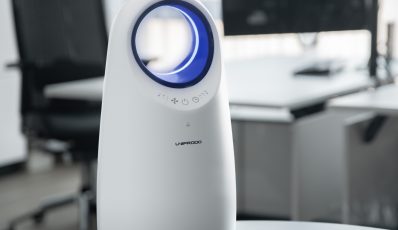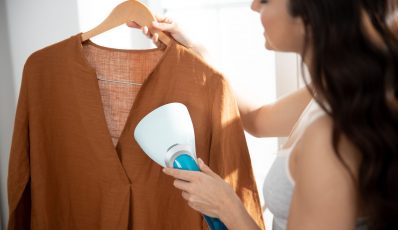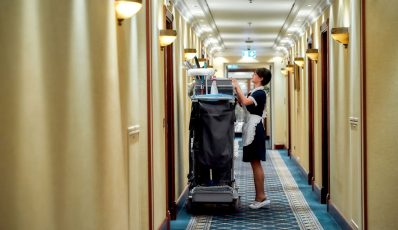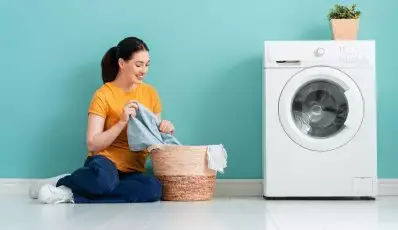Winter’s here, and it’s bringing more than just cosy evenings by the fire. Step outside, and you might smell something burning. Perhaps it’s harder to breathe, or grey dust is creeping onto your windowsills and doorframes? It’s not just a nuisance – it’s a wake-up call. Your lungs deserve protection, and your air deserves to be clean. Let’s break down smog – what it is, why it matters, and how to reclaim your indoor air quality.

Winter’s here, and it’s bringing more than just cosy evenings by the fire. Step outside, and you might smell something burning. Perhaps it’s harder to breathe, or grey dust is creeping onto your windowsills and doorframes? It’s not just a nuisance – it’s a wake-up call. Your lungs deserve protection, and your air deserves to be clean. Let’s break down smog – what it is, why it matters, and how to reclaim your indoor air quality.
The Invisible Danger: What Is Smog?
Smog is a blend of “smoke” and “fog” – a cocktail of pollutants that clings to the air you breathe. It’s made up of nitrogen oxides, sulphur dioxide, fine particles, and VOCs (volatile organic compounds), all combining with atmospheric elements. This toxic mix doesn’t just stink up the air; it poses serious health risks. Two main types exist, and both demand your attention:
Winter Smog (London Smog)
Winter smog shows up during cold, damp, and windless conditions. It’s especially bad in areas reliant on burning coal, heating oil, or other fossil fuels. The result? Sulphur dioxide and other particles mix with fog droplets and stick close to the ground, creating a thick, choking haze.
- Key Features: This smog type is also called “sulphur smog” because of its high concentrations of sulphur dioxide and fine particles.
- Health Risks: Expect respiratory issues, irritated eyes, and even heart problems. Those with existing lung conditions are especially vulnerable.
Summer Smog (Los Angeles Smog or Photochemical Smog)
Summer smog thrives in sunny, warm climates, making it a common problem in southern regions. This type forms when sunlight triggers chemical reactions involving nitrogen oxides and VOCs, creating ground-level ozone – a pollutant that’s bad news for both health and the environment.
- Key Features: Ground-level ozone is the hallmark of summer smog, wreaking havoc on both humans and nature.
- Health Risks: Breathing difficulties, coughing, eye irritation, and asthma attacks are all on the menu. Over time, it can damage lung tissue and reduce lung function.
In Europe, winter smog tends to rear its ugly head during the heating season. Fortunately, governments have been fighting back – think restrictions on burning coal and wood, emissions standards for vehicles, and dust-control measures for factories. But there’s still a long way to go.
Smog and Its Impact on All of Us
Smog is more than just a smelly nuisance. It’s a silent threat that causes watery eyes, coughing, and worse. For children, the elderly, and those with chronic illnesses, it’s downright dangerous. Here’s what you need to watch out for:
- Worsening of lung diseases like emphysema and COPD
- Triggered asthma attacks
- Sudden respiratory or circulatory failures
- Increased risk of strokes and heart attacks
- Birth defects
- Higher cancer risks
Need proof of how deadly smog can be? Just look back to the Great Smog of London in 1952, which killed an estimated 12,000 people in just four days. If smog levels spike where you live, stay indoors and skip outdoor activities like jogging or cycling. Your lungs will thank you.
Why Is Clean Indoor Air Important?
Clean indoor air isn’t just nice to have – it’s essential for your health. It reduces the risk of serious diseases and helps children grow up stronger. Studies show that people raised in clean environments are healthier as adults, with fewer allergies and chronic conditions. Kids even perform better in school when their air is clean.
If smog is a problem in your area, take action. Keep your windows closed, invest in a quality air purifier, and wear a dust mask when heading outside.
How to Choose the Right Air Purifier
The right air purifier can make a world of difference. Start by figuring out the capacity you need. The purifier’s coverage area should match your space. For example, a 50 m² flat requires a purifier with a flow rate of 400 m³/h. Got a complicated floor plan? A compact, portable model might be your best bet, or consider placing smaller purifiers in key areas like kids’ rooms or spaces used by vulnerable individuals.
Other features to look for:
- Number and type of filters
- Extra functions (e.g., humidifiers)
- Adjustable airflow settings
- Durability and build quality
- Stylish designs that blend with your home
An air purifier is a long-term investment. Choose one that not only filters fine particles but also tackles pet hair, dust, mites, and pollen. It’s worth spending a bit more for quality and functionality.
Types of Air Purifiers
The market is brimming with air purifier options, so you’re bound to find one that fits your needs. Here’s a quick rundown of the most popular types:
- Purifiers without additional features
- Purifiers with air-conditioning functionality
- Purifiers with humidifiers
- Purifiers with dehumidifiers
- Purifiers with ionisers
- Purifiers with ozone functions
Modern models often come with air quality sensors. When the air dips below a certain threshold, the purifier kicks in automatically – a handy feature for your peace of mind.
Which Air Purifiers Help Against Smog?
For home use, look for air purifiers with a capacity between 80 and 400 m³/h. These should have at least two filters: a pre-filter to catch larger particles and a HEPA filter to trap fine particles as small as 0.01 µm. HEPA filters are essential for removing dust, bacteria, and even viruses from the air. If you have specific needs, check out our air purifier buying guide for tailored recommendations.
Key Filters for Air Purifiers
Many purifiers also include carbon filters, which neutralise odours and remove VOCs from the air. These filters use activated carbon – a highly porous material that traps pollutants as air passes through. It’s especially effective for tackling smells and chemical vapours.
Other common filters include water filters and ionising filters. Ionisers are excellent for targeting microbes, keeping your environment as fresh as possible.
Helpful Features for Air Purifiers to Tackle Smog
During winter, indoor air tends to get uncomfortably dry. But when the air outside is polluted, opening a window isn’t a good option. This is where a purifier with a humidifying function comes in handy. Properly humidified air can reduce issues like sore throats and dry eyes, which are common in colder months.
Allergy sufferers should consider purifiers with an ozone function. Ozone is fantastic for eliminating mould, mites, and other allergens. Regularly ozonised rooms can feel almost sterile!
A timer function is another useful feature, especially if you’re not home all day. It lets you control when the purifier runs, saving energy and reducing your electricity bill.
For maximum convenience, look for models with remote controls. Adjust settings easily from your sofa or bed without having to get up.
If you plan to use the purifier in your bedroom, check the noise level. High-quality models operate at under 55 dB – roughly the sound of light rain or a quiet conversation. For even quieter operation, choose a model with a night mode. These run at around 30 dB, similar to a whisper or the ticking of a clock.
Breathe Healthy Despite Smog – Here’s How
Despite growing awareness of air pollution, smog remains a widespread issue. It’s linked to asthma, allergies, chronic obstructive pulmonary disease (COPD), lung cancer, and even damage to other organs. People with weakened lungs are particularly sensitive to poor indoor air, and those with health issues often spend even more time indoors, increasing their exposure.
Air purifiers are the solution. These compact devices fit even in small flats or rooms. High-quality home models start at just €70, offering advanced features and effectively filtering harmful particles from the air. Make sure to choose a purifier with a HEPA filter, as it reliably removes fine dust particles in the micrometre range. Depending on your needs, you can also opt for features like user-friendly controls, humidifiers, or odour filters to create your ideal indoor environment.
Final Thoughts on Choosing the Right Air Purifier
Choosing an air purifier isn’t just about buying a gadget – it’s about investing in your health and comfort. Think about your home, your lifestyle, and the specific air quality challenges you face. If smog is a recurring problem, prioritise models with HEPA and carbon filters. For those with allergies or respiratory conditions, extra features like ionisers or ozone functions can be game changers.
And don’t forget the small details. A quiet device can make a big difference to your quality of life, especially if the purifier lives in your bedroom. Ease of use is another bonus – features like remote controls and timers ensure your device works seamlessly with your daily routine.
Ultimately, clean air shouldn’t be a luxury. With the right purifier, you can breathe easier, sleep better, and enjoy peace of mind knowing you’re protecting yourself and your loved ones from harmful pollutants. Don’t wait for the next smog alert – take control of your indoor air quality today.
-
Air Filter Set – activated carbon filter / tube fan / exhaust air hose – 382.2 m³/h – Ø 125 mm outlet 179.00 €
-
Air Filter Set – 30 cm activated carbon filter / extraction fan / exhaust air hose – 249,6 m³/h – Ø 100 mm outlet 169.00 €
-
Air Filter Set – 50 cm activated carbon filter / tube fan / exhaust air hose – 249,6 m³/h – Ø 102 mm outlet 189.00 €
-
Air Conditioner Hose – Ø 100 mm – 10 m length – aluminium






Share